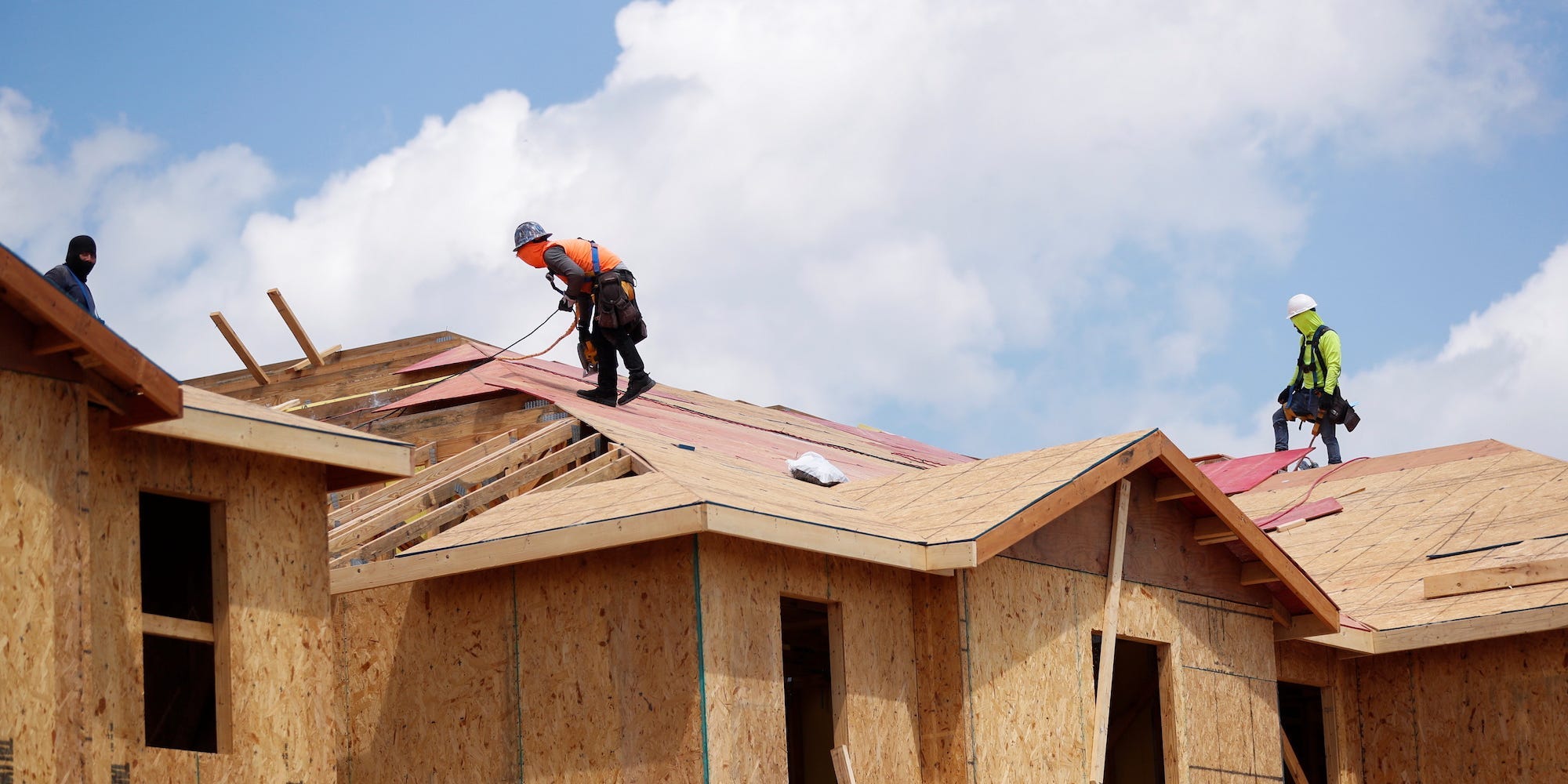
Octavio Jones/Reuters
- The Federal Reserve's emergency actions lifted the housing market. Some fear the boom has gone too far.
- Purchases of mortgage bonds aided markets but are now eyed by some officials as risking a bubble.
- "We don't want to get back in the housing bubble game," St. Louis Fed President James Bullard said.
- See more stories on Insider's business page.
The Federal Reserve did what it had to do.
The onset of the coronavirus pandemic – and its intense economic fallout – prompted the central bank to use its most powerful tool and set its benchmark interest rate near zero. Looking to further aid financial markets, the Fed also began purchasing $120 billion in assets per month, including $40 billion in mortgage-backed securities.
This kind of outsized support wasn't anything new. The Fed had previously combated recessions with rate cuts and emergency asset purchases. But where the housing market was ground zero during the Great Recession, the Fed's actions made it an unexpected beneficiary during the COVID-19 downturn.
The rate cuts dragged mortgage rates to historic lows, and asset purchases further boosted the market. Sales boomed through 2020 as Americans fled cities and capitalized on low borrowing costs. But then supply tumbled to all-time lows and persistently high demand has led prices to climb at a record pace. Other indicators flashed their hottest readings since the mid-2000s bubble, leaving some to question just how long the market can boom before homes simply aren't affordable anymore – and what the Fed will do about it.
Some Fed officials see cause for concern. The mortgage-backed securities acquisitions could be having "some unintended consequences and side effects" that should be weighed against their benefits, Robert Kaplan, president of the Federal Reserve Bank of Dallas said on CNBC late last month.
"Some restraint and moderation as we move toward weathering this pandemic, I think, would be useful in mitigating some of these excesses and imbalances," he added. More recently, Kaplan told The Wall Street Journal that he had raised concerns around the housing market during the Federal Open Market Committee's mid-June meeting.
The Fed held roughly $2.4 trillion worth of mortgage-backed securities as of June 23, up 72% from levels just before the central bank began easing policy at the start of the pandemic. That also compares to a peak of about $1.8 trillion in the aftermath of the financial crisis, which saw the Fed embark on then-unprecedented asset purchase plans. Before 2009 the central bank didn't hold a dollar worth of mortgage-backed securities.
Kaplan isn't alone in his worry. The home-loan market "probably doesn't need as much support" as sales soar and prices spiral higher, Eric Rosengren, president of the Federal Reserve Bank of Boston, said during a May 5 virtual event.
St. Louis Fed President James Bullard told CNBC on June 18 that "maybe we don't need to be in mortgage-backed securities with a booming housing market."
"We don't want to get back in the housing bubble game that cost us a lot of distress in the 2000s," Bullard added.
To be sure, the three aforementioned Fed presidents aren't voting members of the FOMC this year. And other officials are considerably less concerned. Fed Chair Jerome Powell characterized the housing sector as "strong" during the June policy meeting and previously played down concerns that the market was morphing into a bubble.
The central bank's mortgage bond purchases are more geared toward broadly supporting financial conditions, not lifting housing activity specifically, New York Fed President John Williams said on Bloomberg TV on June 22. Adjustments to the asset-purchase plan continue to hinge on whether the US makes "substantial further progress" toward maximum employment and price stability, he added. Williams is a voting member of the FOMC.
The market could cool itself down before the Fed has to shift its stance. Sales of new and existing homes have slowed considerably from the pace seen earlier this year. Housing starts, while off their pandemic-era peak, rose in May and are expected to climb higher as builders rush to meet demand. And costs of key materials like lumber have plummeted from their recent highs.
Powell has offered little insight into when the central bank will pull back on its emergency policies. The April FOMC meeting marked the start of a discussion on when to taper purchases. But as home prices surge and show no signs of slowing, central bankers are under pressure to pull the punch bowl - or at least water it down.

